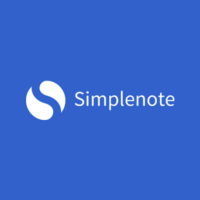Write in Markdown hassle-freely with StackEdit
The modern world recognizes the power of words. With Internet being transformed into an information hub, more and more people hook onto it to monitor all sorts of stuff ranging from food to technology to travel and leisure. In such a setting, one of the best ways to make oneself useful is by being a part of the community that makes such valuable information available. Writers and bloggers are an enormous part of this community. And this post is about a tool that is bound to make the work of bloggers and writers easy. Weâre talking about StackEdit here and trying to find out how much water this online in-browser editor holds.
StackEdit â In Browser Editor for Smart Writers
When you hear the name StackEdit, it hardly strikes you as an online writing tool with awesome features that can simplify the work of bloggers and writers to a great extent. But thatâs exactly what it is. StackEdit is an in-browser Markdown editor that promises to deliver an unrivalled writing experience. It lets you create articles and blog posts that you can publish on a number of social platforms simultaneously. And if youâre thinking thereâs nothing great about it, wait till you hear about all the controls it offers you.
The tool encompasses almost the range of capabilities packed into NotePad++ or WordPad or other offline popular writing tools. Of course it isnât as diverse as Microsoft Word, but as far as blogging or posting articles is concerned, it lets you achieve everything you need. Powered by What-You-See-Is-What-You-Get controls, the editor helps you visualize the final rendering of your documents before you actually post them online. Whatâs more, you can integrate StackEdit with Google Drive and Dropbox to save your documents directly to the cloud.
Additional highlights of the tool include:
- âScroll Syncâ extension to bind the editorsâ scrollbars so that you can keep a constant eye on the outputâs final look while writing
- Built-in âSpell checkerâ to carry out multilingual spelling checks and display suggestions for correction
- Various customizable options available to personalize writing settings and create personal extensions
- Allows direct upload of documents to Blogger, GitHub, Tumblr, WordPress, etc
- Documents can be uploaded in Markdown format, HTML, or using Underscore template engine
- Facilitates collaboration on common documents, automatically merges modifications from multiple collaborators
- Supports insertion of inline comments and discussions like Word or Google Docs
- Includes an offline mode that allows you to write on the move just like a desktop application

With advanced capabilities of inserting mathematical expressions into documents and creating UML diagrams using simple syntax, StackEdit is quickly becoming one of the most popular in-browser writing editors of all time.
Hereâs how to use StackEdit
Visit the toolâs homepage and click on âStart writing now!â in the top menu. This will redirect you to a screen divided into 2 panels â left one for editing and right one to preview the output. The preview window is toggle-able and you can close it if distracts you while writing. By default youâll see some text displayed in the editor. It is dummy text that you can delete but weâll advise against it since going through it can give you helpful pointers about the toolâs syntax.
The syntax of the tool resembles HTML with tags specifying text attributes, for example, to insert icons tags are used. Catching the other shortcuts is simple too. We quickly made out that to make some text bold we had to enclose it within asterix pairs (**text**) and marking some text as headings (H3) required prefixing it with the same number of hash signs (###). Similarly, figuring out the trick behind inserting bullet lists and keyboard button images was easy.
We recommend that you read the full dummy text displayed in the editor to know about StackEditâs features in detail. If you do need to delete the text, copy-past it elsewhere and then go ahead. This could save many of your potential work hours that you might have to spend in the future to find out precious shortcuts about the tool (like how to insert a table of contents or create UML diagrams using text syntax).
In addition to the text youâll find a host of other editing options in the file menu including Bold, Italics, Hyperlink, Code-Sample, Image, etc. Simply click on any of them to insert the respective tags in the text and youâll be good to go. In the same menu youâll find undo-redo buttons as well as a button that allows you to insert comments into the documents you create.
On the left-most corner of the file menu youâll find a hash button which reveals additional options like import / export document, share, publish, convert to Markdown, etc. It will also give you access to account settings. Lastly, on the right-most corner of the file menu, a folder button will allow you to create new document, delete an existing document, as well as manage your documents.

Plus VS Minus
We were actually quite impressed by StackEdit. The tool was so simple, yet so brilliant. It gave us access to all options needed to create perfect looking documents and upload them to various social platforms easily. Moreover, it included a bunch of editing options and features at par with popular offline editors like Word.
But, there were also a few drawbacks we noticed, the biggest one being the absence of a âSaveâ button. The documents were stored only in the browserâs local storage. There was no option to create an account wherein you could perhaps save the documents you create. So in case the browser crashed, we could lose all our text and changes. Another one was that although once connected to the toolâs site, you can get disconnected and work offline, to initially establish a session you need an Internet connection. This contradicts the toolâs claim to support offline working.
Brilliant in-browser Markdown editor for writers / bloggers â @stackedit stackedit.io/ via @supermonitoring
Final Verdict
StackEdit is actually a great tool, though with a few limitations. But then considering it doesnât need you to pay even a single penny, not having to sign up could be counted as a benefit if the makers can provide a way to save documents.







